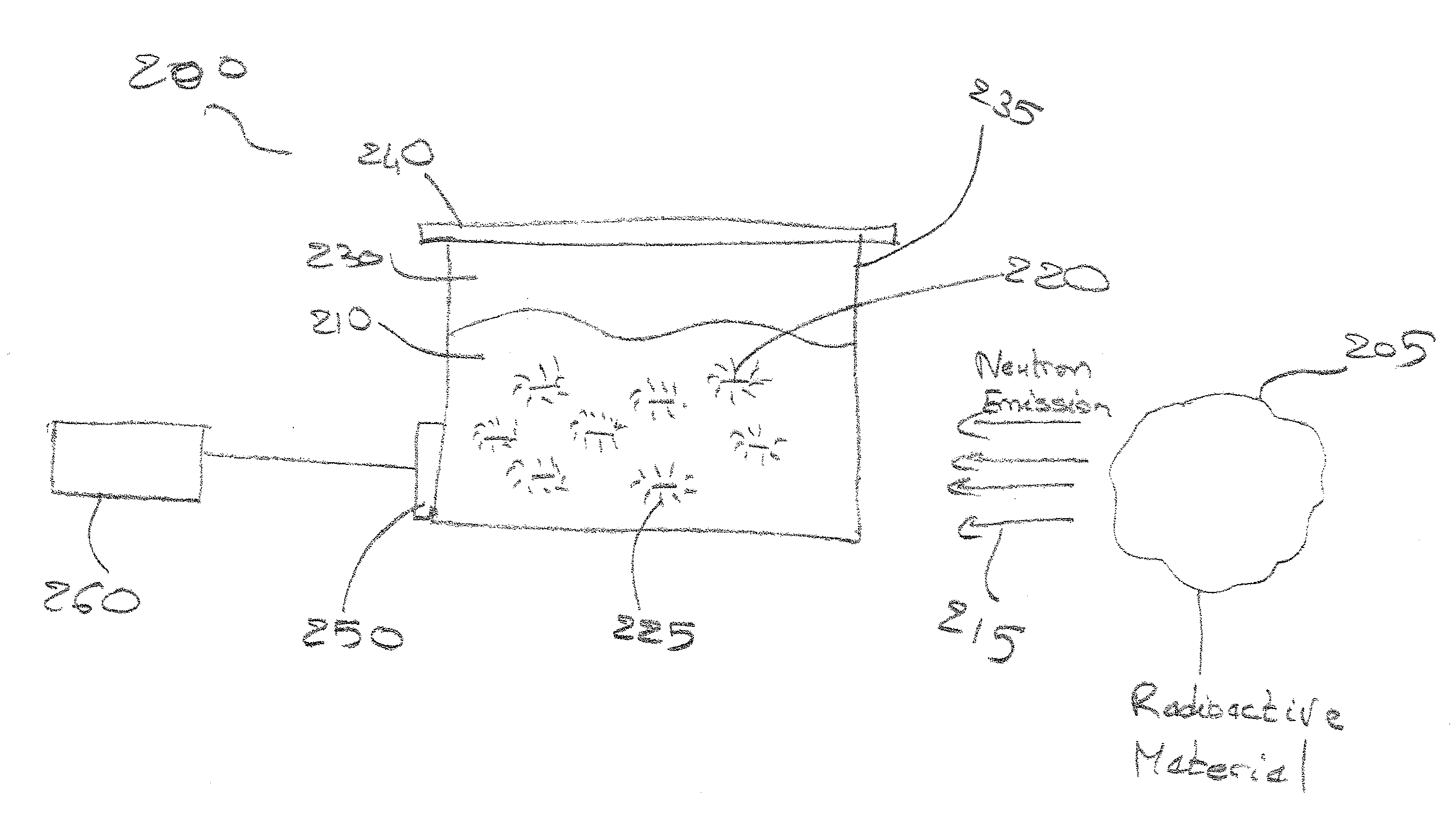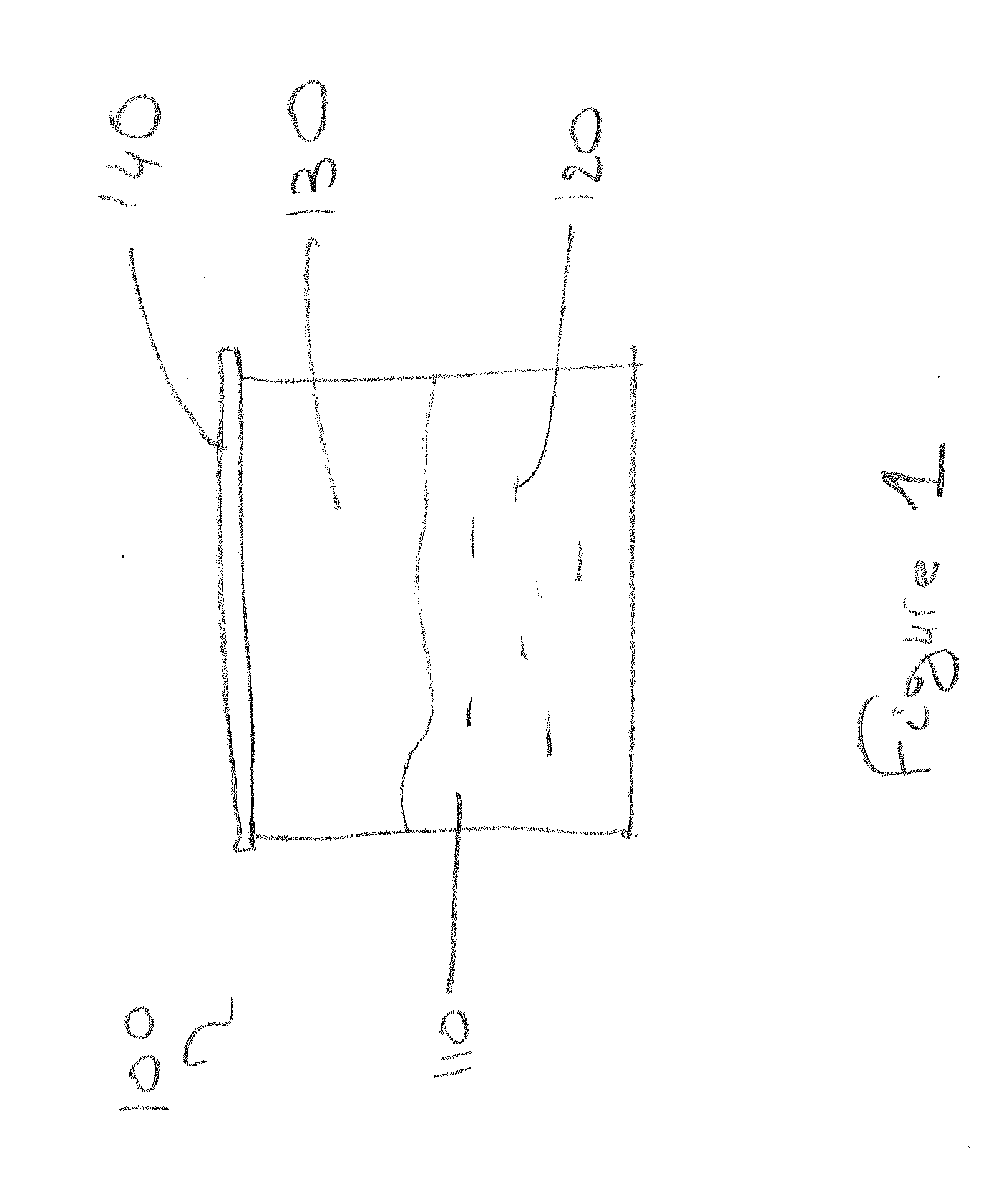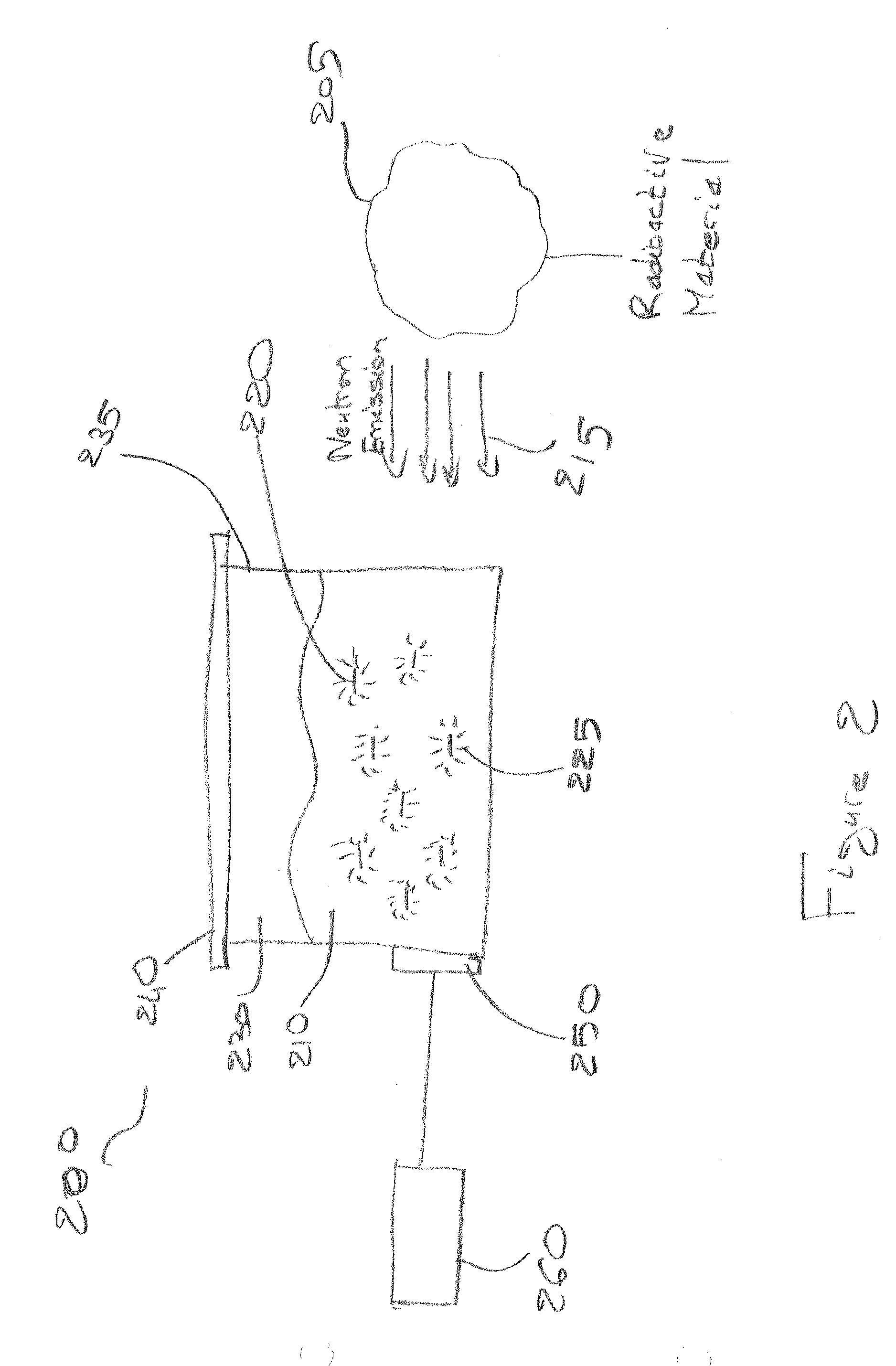Neutron detector
a neutron detector and detector technology, applied in the field of neutron detectors, can solve the problems of critical shortage of helium-3 isotopes, critical supply shortages of helium-3, and generally do not duplicate the sensitivity and/or efficiency of helium-3 based systems, and achieve absorb and react with neutron radiation very effectively, and high neutron capture cross-section
- Summary
- Abstract
- Description
- Claims
- Application Information
AI Technical Summary
Benefits of technology
Problems solved by technology
Method used
Image
Examples
Embodiment Construction
[0017]These and other features and advantages of this invention are described in, or are apparent from, the following detailed description of various exemplary aspects.
[0018]FIG. 1 is an illustration of a Gadolinium-based neutron detector system, according to various aspects of the current invention. In FIG. 1, the container 100 includes a fluid 110 such as, for example, deionized water, which is capable of detecting beta particles, and a dopant 120 such as, for example, Gadolinium Chloride (GdCl3), which dissolved or dispersed in the fluid 110. According to various aspects, when the container is metal or metallic and may be subjected to corrosion, the container may also contain an inert gas 130 such as, for example, argon (Ar), in order to prevent the occurrence of corrosion reactions, the result of which could potentially be a decrease in the neutron capture cross-section of the dopant 120. The container 100 may be sealed via a seal 140 in such as way as to prevent any reactive ga...
PUM
 Login to View More
Login to View More Abstract
Description
Claims
Application Information
 Login to View More
Login to View More - R&D
- Intellectual Property
- Life Sciences
- Materials
- Tech Scout
- Unparalleled Data Quality
- Higher Quality Content
- 60% Fewer Hallucinations
Browse by: Latest US Patents, China's latest patents, Technical Efficacy Thesaurus, Application Domain, Technology Topic, Popular Technical Reports.
© 2025 PatSnap. All rights reserved.Legal|Privacy policy|Modern Slavery Act Transparency Statement|Sitemap|About US| Contact US: help@patsnap.com



